Modern psychoactive drugs have received a lot of negative attention due to drug laws. But did you know archaeological texts from Ancient India show the use of medical cannabis in the treatment of insomnia, headaches, gastrointestinal issues, and even to ease the pain of childbirth? The marijuana plant Cannabis Sativa has been around for centuries and isn’t going anywhere anytime soon.
While cannabis has historically been used as a medicine in different forms all over the world, we’re seeing a recent resurgence in the past few decades as legislation changes.
Marijuana, or cannabis that contains more than 0.3 THC content, and the kind that can get you high, is still federally illegal. On the other hand, cannabis with a lower THC content, (also known as CBD) is federally legal.
The National Institute on Drug Abuse defines medical cannabis as “using the whole, unprocessed marijuana plant or its basic extracts to treat symptoms of illness and other conditions”.
One issue with “medical marijuana” is that nothing is known about its long-term effects on persons with health- or age-related vulnerabilities, such as older adults or people with cancer, AIDS, cardiovascular disease, multiple sclerosis, or other neurological disorders. More research is needed to see if those whose health has been harmed by disease or its treatment (e.g., chemotherapy) are more vulnerable to the negative effects of marijuana usage.
Medical cannabis laws
The bottom line is that U.S. federal law prohibits the use of marijuana. And yet, despite the federal government blocking legislation on medical cannabis, all but 12 states in the U.S. permit the use of medical marijuana. Many states allow THC to be used for medical reasons. State medical cannabis laws can be confusing, so always double-check to be sure.
In addition, the following countries have made medical marijuana legal. However, remember that medical marijuana laws vary greatly in detail from nation to nation.
Argentina, Australia, Barbados, Brazil, Canada, Chile, Colombia, Croatia, Cyprus, Czech Republic, Denmark, Ecuador, Finland, Germany, Greece, Ireland, Israel, Italy, Jamaica, Lebanon, Lithuania, Luxembourg, Malawi, Malta, the Netherlands, New Zealand, North Macedonia, Norway, Panama, Peru, Poland, Portugal, Rwanda, Saint Vincent and the Grenadines, San Marino, Sri Lanka, Switzerland, Thailand, the United Kingdom, Uruguay, Vanuatu, Zambia, and Zimbabwe.
In the U.S., the FDA has not yet approved the use of marijuana for the treatment of any conditions. Due to issues with federal legislation, clinical trials can be difficult to fund. It has, however, approved CBD (Epidiolex) and dronabinol (man-made cannabis) for epilepsy and nausea caused by chemotherapy and HIV/AIDS.
Before we detail the medical benefits of medical marijuana, a few side effects should be addressed. And as always, consult your physician before considering medical marijuana for you. Medical supervision, as well as medical expertise, should always be sought before trying.
Medical marijuana, especially at high doses can cause:
- Increased heart rate
- Dizziness
- Cannabis use disorder and withdrawal symptoms
- Impaired concentration and memory
- Slower reaction times
- Negative drug-to-drug interactions
- Increased risk of heart attack and stroke
- Increased appetite
- Potential for addiction
- Hallucinations or mental illness
- Withdrawal symptoms
Is medical marijuana addictive?
Marijuana use can lead to the development of a problem with the drug, known as a marijuana use disorder, which in severe cases can lead to addiction. According to recent studies, 30 percent of marijuana users may have some form of marijuana use disorder. Marijuana users under the age of 18 are four to seven times more likely than adults to develop a marijuana use problem.
Marijuana use issues are frequently linked to dependence, which occurs when a person has withdrawal symptoms after they stop using the drug. Irritability, mood and sleep problems, decreased appetite, cravings, restlessness, and/or various forms of physical discomfort are common among marijuana users. These symptoms peak within the first week after quitting and can last up to two weeks.
Cannabis Hyperemesis Syndrome
Chronic marijuana usage, according to studies, can cause Cannabinoid Hyperemesis Syndrome, which is characterized by recurrent bouts of extreme nausea, vomiting, and dehydration. This syndrome has been observed in people under the age of 50 who have a long history of marijuana use. Cannabinoid Hyperemesis Syndrome can cause frequent admissions to the emergency room, although it may go away once a person stops smoking marijuana.
The link between marijuana and psychiatric disorders
Several studies have connected marijuana use to an increased risk of psychiatric diseases such as psychosis (schizophrenia), depression, anxiety, and substance use disorders, although it’s not always clear whether or not it causes these conditions.
According to new research, consuming high-potency marijuana daily increases the risk of psychosis by roughly five times when compared to persons who have never used marijuana. This link has been demonstrated to be influenced by the amount of substance consumed, the age at which it was first used, and genetic vulnerability.
To date, the most compelling data points to a relationship between marijuana use and psychiatric illnesses in people who have a genetic or other predisposition.
Available treatments for medical marijuana dependence
Marijuana use disorders appear to be fairly comparable to other substance use disorders, albeit the clinical results may be less severe in the long run. Adults seeking treatment for marijuana use disorders have used marijuana nearly every day for more than ten years on average and have tried to quit six times. Marijuana users, particularly teenagers, are more likely to have other psychological issues (comorbidity).
Other substances, such as cocaine or alcohol, may also be used or abused by them. According to available research, adequately treating the mental health condition with normal treatments including pharmaceuticals and behavioral therapies may help reduce marijuana usage, especially among heavy users and those with more chronic mental illnesses. The behavioral interventions listed below have been demonstrated to be effective:
- Cognitive Behavioral Therapy: A type of psychotherapy that teaches people how to recognize and correct problematic behaviors to improve self-control, stop drug use, and treat a variety of other issues that frequently accompany them.
- Contingency Management: a treatment method that involves constant monitoring of the target behavior and the provision (or removal) of concrete, positive rewards when the target behavior occurs (or does not).
- Motivational Enhancement Therapy: The therapy does not aim to treat the person, but rather mobilizes his or her internal resources for change and participation in treatment.
Rising potency
Marijuana strength has progressively increased over the last few decades, as seen by confiscated samples. The average THC level in captured marijuana samples was less than 4% in the early 1990s. In 2018, it was greater than 15%. THC levels in marijuana concentrates can be substantially greater (see Marijuana Concentrates DrugFacts). The increasing potency of marijuana, combined with the use of high-THC concentrates, raises concerns that the consequences of marijuana use today may be worse than in the past, especially among new users and young people whose brains are still developing.
Researchers are still unsure of the full scope of the implications when the body and brain (particularly the developing brain) interact.
Is medical marijuana a gateway drug?
According to several studies, marijuana usage is more likely to precede the use of other licit and illicit drugs, as well as the development of drug addiction. For example, a study using longitudinal data from the National Epidemiological Study of Alcohol Use and Related Disorders found that adults who reported marijuana use during the first wave of the survey were more likely than adults who did not use marijuana to develop an alcohol use disorder within three years; people who used marijuana and already had an alcohol use disorder were at a higher risk of having their alcohol use disorder worsen. Marijuana use has also been connected to other chemical addictions, such as nicotine addiction.
Animal Research
In rodents, early exposure to cannabis reduces the sensitivity of brain dopamine reward areas later in life. To the extent that these findings apply to humans, they may help explain why persons who start using marijuana early in life are more vulnerable to developing addictions to other substances of abuse later in life, as most epidemiological studies have shown. THC’s potential to “prime” the brain for greater responses to other drugs has also been demonstrated in animal studies. For example, rats previously given THC have a higher behavioral response not only when given more THC, but also when given other drugs like morphine—a phenomenon known as cross-sensitization.
Can I drive on medical marijuana?
The short answer: no.
Marijuana decreases judgment, motor coordination, and response speed significantly, and studies have revealed a link between blood THC levels and reduced driving abilities.
Marijuana is the most commonly detected illicit drug in the blood of drivers who have been involved in car accidents, including fatal ones.
Two big European studies discovered that drivers with THC in their blood were nearly twice as likely to be responsible for a fatal crash as drivers who had not used drugs or alcohol.
However, because marijuana can be found in body fluids for days or even weeks after intoxication and because people commonly mix it with alcohol, the significance of marijuana in collisions is often unclear. Drivers who have THC in their blood, especially at higher levels, are three to seven times more likely to be at fault in a car accident than those who have not used drugs or alcohol. When marijuana is used with alcohol, the danger appears to be higher than when either substance is used alone.
Several meta-analyses of various studies revealed that marijuana usage raised the probability of being involved in an accident significantly—in some cases, the risk doubled or more than doubled.
Medical Marijuana and Pregnancy
Given shifting marijuana legislation and large increases in the number of pregnant women seeking substance use disorder treatment for marijuana use over the last decade, more study is needed on how marijuana use during pregnancy may affect the health and development of infants. According to one study, around 20% of pregnant women aged 24 and under, tested positive for marijuana.
However, according to this study, women are nearly twice as likely to test positive for marijuana usage in a drug test as they claim in self-reported measures. This shows that self-reported marijuana use rates among pregnant women may not be a reliable indicator of marijuana use. Furthermore, non-medical workers at marijuana dispensaries were recommended in one survey of dispensaries.
There is no human study linking marijuana usage to the risk of miscarriage, while animal studies suggest that using marijuana early in pregnancy raises the risk of miscarriage. Marijuana usage during pregnancy has been linked to future developmental and hyperactivity abnormalities in children in some studies. The evidence on whether marijuana use during pregnancy is linked to low birth weight or early birth is conflicting, while long-term usage may increase these risks.
Pregnant women who use marijuana had a 2.3 times higher chance of stillbirth, according to research. Because marijuana has the potential to harm a developing brain, the American College of Obstetricians and Gynecologists recommends that obstetrician-gynecologists advise women against smoking marijuana while trying to conceive, during pregnancy, or after giving birth.
Marijuana and attention & amotivational syndrome
According to studies, marijuana’s detrimental effects on attention, memory, and learning can linger for days or weeks after the acute effects of the substance have worn off, depending on the individual’s marijuana history.
As a result, someone who smokes marijuana regularly may be functioning at a lower intellectual level for the majority of the time, if not all of the time. There is a lot of evidence suggesting students who use marijuana have worse academic outcomes than their non-smoking counterparts. For example, an analysis of 48 studies indicated that marijuana usage is linked to lower educational attainment (i.e., reduced chances of graduating).
According to a recent analysis based on data from three big studies in Australia and New Zealand, teenagers who regularly used marijuana were much less likely than their non-using counterparts to complete high school or earn a degree. They were also more likely to develop an addiction, experiment with other substances, and attempt suicide. Heavy marijuana usage has also been connected to reduced income, increased welfare dependency, unemployment, criminal activity, and worse life satisfaction in other studies.
Marijuana has also been linked to amotivational syndrome, which is described as a lack of or lessened desire to engage in normally rewarding activities. Because of the endocannabinoid system’s function in mood and reward regulation, it’s been suggested that brain changes caused by early marijuana use may underpin these relationships, but additional research is needed to confirm and better understand these links.

Benefits of medical marijuana
While medical marijuana does not technically cure any disease or condition yet, the following article will take you through the various symptoms of conditions, and how these conditions can be alleviated through medical cannabis.
Some well-known symptoms that medical marijuana can help with include insomnia, nausea/appetite loss, tremors, seizures, and many more.
Researchers believe that drugs like these, which use refined compounds obtained from or based on those found in the marijuana plant, are more therapeutically promising than using the whole plant or its crude extracts. Drug development from botanicals such as the marijuana plant is fraught with difficulties.
Botanicals can include hundreds of unknown active compounds, and developing a product with precise and consistent dosages of these substances might be difficult. Other issues with marijuana use as medication include the negative health effects of smoking and THC-induced cognitive impairment.
Despite this, an increasing number of jurisdictions have allowed the distribution of marijuana or marijuana extracts to patients suffering from a variety of medical illnesses.
Who gets prescribed medical marijuana?
Getting your medical marijuana card can be a relatively easy process, we recommend using a service like Leafy DOC to assist you. Health research has come a long way to confirm that medical cannabis is indeed effective for several conditions. Medical cannabis users should be cautious. Just like conventional medication, medical marijuana comes with various side effects that should be disclosed before being medicated. We’ll walk through the conditions below and discuss how it’s being used.
Alzheimer’s disease
Research for the use of cannabis in the treatment of Alzheimer’s disease is still ongoing. Typically, it’s being used for mood and anxiety, or to treat agitation and aggression in some patients. While there is currently no known cure for Alzheimer’s, researchers hope that the use of cannabis can continue to at least manage some of the many symptoms of Alzheimer’s. Like so many other conditions, there is no silver bullet.
In addition, high levels of THC may not be beneficial for those with severe forms or those that are already having difficulty with memory and recall, so it must be administered with caution.
Anorexia
Anorexia, like many other eating disorders, can cause massive weight loss and nutrient deficiencies. Doctors hope that medical marijuana can stimulate the appetites of those with anorexia. However, since anorexia is as damaging mentally as it is physically, researchers warn that medical marijuana may do more harm than good, especially for those with co-existing mental illnesses.
Amyotrophic lateral sclerosis (ALS)
While ALS is another devastating disease with no current cure, physicians see medical marijuana as a means of increasing an ALS patient’s quality of life. Major symptoms of ALS include muscle spasms and shaking, which can be subdued by the effects of marijuana.
ALS patients sometimes also suffer chronic pain, which can be relieved by cannabinoids like CBD. According to the Journal of Addiction Medicine, some patients prefer CBD over traditional painkillers because those painkillers may cause damage to the liver and often are debilitatingly addictive.
Lastly, like other conditions, ALS and some of the medication needed to treat it can cause appetite suppression. Just like when recreational users get the “munchies” from consuming cannabis, medical marijuana can help with lessened appetites caused by numerous conditions.
HIV/AIDS
HIV/AIDS, like other chronic conditions, comes with nausea and appetite loss. It can sometimes inflict neuropathic pain, which is why medical cannabis is prescribed for HIV/AIDS patients. This is especially useful because HIV/AIDS can cause chronic weight loss, also known as wasting.
So while CBD helps with pain relief, it’s THC that has been shown to stimulate the appetite. At the same time, the THC in marijuana can be disorienting to those who aren’t used to the effects of the medicine.
It’s important to note as well, that smoking cannabis, or intaking any foreign particulates into the lungs is a risk to anyone with a compromised immune system. This explains why many HIV/AIDS patients elect for edible cannabis or topical solutions.
Crohn’s disease
While medical marijuana has not been shown to reduce inflammation or reduce disease activity of Crohn’s disease, it’s been shown to reduce (you guessed it) nausea and appetite loss. More research must be done about medical marijuana and Crohn’s, but for the time being, patients seem to utilize the medicine to help them eat. Actor and comedian Pete Davidson is famous for his medical marijuana use, which he claims helps dilute the symptoms of Crohn’s.
Epilepsy and seizures
Strains rich in CBD, rather than THC, appear to do wonders for those with epilepsy and seizures. Epidiolex, a purified version of CBD, has been approved by the food and drug administration (FDA) in 2018 to treat patients with Dravet syndrome and Lennox-Gastaut syndrome.
These conditions are both rare and cause early-onset epilepsy in children. Some of these even cause treatment-resistant epilepsy, which has stumped physicians for years. However, studies have shown that Epidiolex reduced seizures by almost 50%, which is extremely promising for those that suffer from these disorders, especially severe forms.
Glaucoma
Glaucoma is not one, but a series of eye conditions due to nerve damage from increased pressure called intraocular pressure. While cannabis may reduce pressure caused by glaucoma, it’s difficult to keep up with the pain since the pressure can occur 24/7. This means that high levels of both THC and CBD would need to be ingested to keep up with symptoms. At this rate, cannabis may do more harm than good, especially for other parts of the body, such as the lungs, if constantly smoked.
So while THC-rich cannabis may temporarily reduce eye pressure, it would not be the most practical treatment for those with chronic and constant symptoms.
Multiple sclerosis and muscle spasms
Like seizure disorders and ALS, multiple sclerosis (MS) can cause debilitating muscle spasms and shakes all over the body. Cannabis can reduce these spasms or stiffness, at least anecdotally in patients that already use medical marijuana. In general, results are mixed across the board to treat MS symptoms, and there is currently no FDA-approved treatment for it.
For the most part, there is more evidence-based testing occurring with methods like topical solutions, rather than ingested or smoked with multiple sclerosis. Hopefully, more research on medical marijuana can help identify compounds or chemicals that may alleviate symptoms of this complex disease.
Posttraumatic stress disorder
PTSD is a chronic condition that can cause nightmares, panic attacks, insomnia, and intensely self-destructive behavior. Medical marijuana use can work especially effectively as a nighttime aid, especially since it’s anecdotally known to prevent intense dreams and nightmares. Researchers have also found that THC reduces activity in the part of the brain that deals with perceived dangers.
Accepted medical use of cannabis has become prevalent among veterans especially due to the opioid epidemic.
Severe and chronic pain
Of all the conditions that people suffer from, medical cannabis is most popular among those with severe and chronic pain. Surveys have shown great efficacy in the treatment of chronic pain with medical cannabis and are especially lauded as an alternative to other drugs from the opiate family.
This is because some of these painkillers are designed to manage short-term pain, and can be highly addictive. Patients have found that constant use of marijuana, while not always recommended, is preferred to constant use of opiates or more aggressive pain medication.
It’s also stated anecdotally by patients that medical marijuana has done wonders for the mental effects of chronic pain. Meaning, with chronic pain, each day can be mentally taxing as patients often suffer from fatigue as well. Medical marijuana may be able to improve their outlook and change mentalities surrounding chronic, everyday illness, not to mention the quality of sleep as well.
Many patients also preferred smoking cannabis for chronic pain, as opposed to topicals or edibles. This may be because chronic pain isn’t always localized. The more local the pain, the better topicals work. If not localized, and the pain is more general, smoking or vaping cannabis may be the better route. In addition, smoking or vaping usually spurs a quicker onset in absorption, meaning faster results.
Severe nausea or vomiting caused by cancer treatment
According to the National Cancer Institute, cancer chemotherapy like some other intense treatments can cause major nausea and vomiting. But appetite improvement and anti-nausea benefits are not all that can be gleaned from medical marijuana. Patients also use smoked cannabis for pain management and neuropathy that comes from cancer and its treatments.
However, most studies into medical cannabis and cancer revolve around orally ingested CBD. More research will be done into THC-packed strains and their effects on cancer chemotherapy patients. As for nausea and vomiting, it’s been proven time and time again that medical cannabis helps.
Tourette’s Syndrome
People with Tourette’s can often experience painful or difficult tics that do not always go away with traditional FDA-approved medication. Medical marijuana and cannabis-based medications that include THC and cannabis extracts have been reported to reduce symptoms of Tourette Syndrome in small doses. Again, this is not something that should be self-diagnosed, as the type of cannabis treatment is only intended for medical purposes.
Variations of Consumable Cannabis
Smoke or Vapor
Smoking or vaping cannabis is highly popular and gets to work almost instantaneously. However, this is probably not the route for patients that are at risk for (or already have) lung or heart disease.
It should also generally be avoided for those with compromised immune systems or lung cancer, as smoke contains many foreign substances that could cause more harm to the body.
Marijuana use is linked to significant airway inflammation, increased airway resistance, and lung hyperinflation, with regular marijuana users reporting higher chronic bronchitis symptoms than non-smokers. According to one study, those who consume marijuana frequently had more outpatient medical visits for respiratory difficulties than those who do not.
Some case studies have suggested that smoking marijuana may increase susceptibility to lung infections, such as pneumonia, in patients with immunological deficits due to THC’s immune-suppressive effects; however, a large AIDS cohort study did not establish such a link. Smoking marijuana may also impair the immunological response of the respiratory system, increasing the risk of respiratory diseases such as pneumonia and emphysema.
In addition, unfortunately, due to a history of cannabis stigma, smoking seems to be looked down on in comparison to other methods of consumption.
Secondhand smoke and its effects
People frequently inquire about the potential psychotropic effects of secondhand marijuana smoke exposure, as well as whether someone who has inhaled secondhand marijuana smoke could fail a drug test.
THC was found in the blood of nonsmoking participants after they spent 3 hours in a well-ventilated environment with persons casually smoking marijuana; THC was present in the blood of the nonsmoking participants, but the amount was much below the level required to fail a drug test.
Another study demonstrated that some nonsmoking volunteers exposed for an hour to high-THC marijuana (11.3 percent THC concentration) in an unventilated room had positive urine assays in the hours afterward.
Secondhand cigarette smoke poses established health dangers to the heart and lungs, for example, raising questions about whether secondhand marijuana smoke poses similar health problems. There has been relatively little research done on this topic to so.
In a 2016 research on rats, it was discovered that secondhand marijuana smoke had the same effect on blood vessel function as secondhand tobacco smoke, and the effects lasted longer. 82 The effects of one minute of secondhand marijuana smoking on flow-mediated dilatation (the extent to which arteries widen in response to increased blood flow) of the femoral artery lasted for at least 90 minutes, while the effects of one minute of secondhand tobacco smoke lasted just 30 minutes.
Edibles
Edibles can be a great alternative to smoked cannabis especially for those with compromised immune systems or for those that are too young to smoke. While probably not as effective for those struggling to maintain appetite, edibles are in many ways, friendlier for those with less experience with cannabis.
It should be noted, however, that edibles can easily be accidentally ingested and should be stored carefully. Edibles, in addition, can in higher doses, create a very potent high, as the compounds are broken down in your liver, rather than your lungs. This high can last significantly longer than smoked cannabis, especially in high doses.
Topicals
If you have aches and pains that are localized in one specific part of your body, topicals are for you. In addition, they’re probably the least intimidating form of medical cannabis because patients generally are used to applying other topicals anyway.
Pills
The pill form is probably the most user-friendly form of consuming medical cannabis as well as the most discreet and least stigmatized. The risk of adverse health effects from medical cannabis is lowered by taking pills since it’s not affecting your lungs or airways in any way.
Cannabis oil
Cannabis oil, also known as concentrates or dabs, is very popular in both recreational and medicinal cannabis settings. Often characterized by its high potency, oil can be used for conditions that need especially high strength. Critics of cannabis oil consider this marijuana addictive, mostly because of the tolerance build-up that occurs with frequent use. Cannabis oil may be good for very chronic diseases but should be monitored aggressively.
Medical Marijuana Internationally
Countries that have legalized the medical use of cannabis include Argentina, Australia, Barbados, Brazil, Canada, Chile, Colombia, Costa Rica, Croatia, Cyprus, Czech Republic, Denmark, Ecuador, Finland, Germany, Greece, Ireland, Israel, Italy, Jamaica, Lebanon, Lithuania, Luxembourg, Malawi, Malta, the Netherlands, New Zealand, North Macedonia, Norway, Panama, Peru, Poland, Portugal, Rwanda, Saint Vincent and the Grenadines, San Marino, Sri Lanka, Switzerland, Thailand, the United Kingdom, Uruguay, Vanuatu, Zambia, and Zimbabwe.
Quite a list. Each continent currently has a fair amount of countries with legal marijuana. Even countries with harsh drug laws like in east Asia have relaxed their laws regarding marijuana, especially for medical benefits.
Conclusion
Medical cannabis has a very wide range in efficacy for several conditions and symptoms. There’s no one-size-fits-all amount or method of medical cannabis that is approved for all of these conditions. It’s best approached through a licensed physician, who can properly diagnose and dose you based on your symptoms. The bottom line is currently medical cannabis can not treat diseases, but rather, relieve symptoms associated with these medical conditions.
While researchers and physicians have made groundbreaking discoveries in the world of medical cannabis, there’s still so much to learn regarding the health benefits of the cannabis plant. As time goes on, expect numerous new uses and forms of medical cannabis for all kinds of conditions. Hopefully, with legalization and de-stigmatization, more can be studied surrounding cannabis-based medicines.
Whether the medicinal benefits of smoking or otherwise consuming marijuana outweigh the health dangers is still an open subject that science has yet to answer. Even though several jurisdictions currently allow medical marijuana dispensing and anecdotal evidence for the usefulness of marijuana-derived substances, the US Food and Drug Administration has not approved “medical marijuana.” Safe treatments based on cannabinoid compounds produced from the marijuana plant, on the other hand, have been available for decades, with more on the way.
Remember to always check your local and state medical marijuana laws before you buy medical marijuana.
Did you know?
- More than 20 prescription medicines containing marijuana were sold in U.S. pharmacies at the turn of the 20th century. Pot-based medications were commonly available until 1942 when cannabis was stricken from the U.S. Pharmacopeia, the official compendium of drugs considered effective. From 1937 to 1942 the federal government collected a tax of $1 per ounce for such drugs.
- The federal government is in the pot-growing business. Under a federal contract, the University of Mississippi in Oxford cultivates marijuana for use by researchers, who have to be cleared by the National Institute on Drug Abuse.
- Some states allow privately run, for-profit cannabis dispensaries— brick-and-mortar facilities where a certified patient or caretaker can enter and buy products. You generally need to prove that you are certified to enter.
- In other states, only nonprofit dispensaries are permitted. Or the state may allow people to obtain medical cannabis from nonprofit “collectives” in which multiple patients band together to produce and provide cannabis to themselves.
- Among people aged 12 or older in 2020, 17.9% (or about 49.6 million people) reported using cannabis in the past 12 months.
- Among people aged 12 or older in 2020, an estimated 5.1% (or about 14.2 million people) had a cannabis use disorder in the past 12 months.
How Does the Legalization of Cannabis Affect the Use of Medical Marijuana in Healthcare?
The cannabis legalization has had a significant impact on the use of medical marijuana in healthcare. With the growing acceptance of cannabis legalization and healthcare, more patients have access to medical marijuana for managing conditions like chronic pain, nausea, and epilepsy. This has led to increased research and development in the field of medical marijuana.
Looking for more information?
The NIDA website includes:
- information about drugs and related health consequences
- NIDA publications, news, and events
- resources for health care professionals
- funding information (including program announcements and deadlines)
- international activities
- links to related websites (access to websites of many other organizations in the field)
- information in Spanish (en español)
NIDA webpages
- nida.nih.gov/drugs-abuse/marijuana
- nida.nih.gov/related-topics/hivaids
- researchstudies.drugabuse.gov
- irp.drugabuse.gov
For physician information
- NIDAMED: nida.nih.gov/nidamed
Other websites
Information about marijuana is also available through the following websites:
- Substance Abuse and Mental Health Services Administration (SAMHSA)
- Drug Enforcement Administration (DEA)
- Monitoring the Future
- Partnership for Drug-Free Kids
Get started with Leafy Doc
Leafy DOC is an online personal health coach that can improve your life with clear health goals. With this service, you can get matched with a doctor who is authorized under your state medical marijuana laws, who will review your medical history and decide if you can benefit from medical cannabis use.
Book your appointment
Skip unnecessary trips to the doctor’s office and do your appointment from the comfort of your home. Provide basic medical history, family history of illnesses, and, book your appointment.
Match with a doctor
Connect with the right doctor for you and easily talk to your provider on your phone or tablet. The provider will evaluate your condition and will address your questions regarding medicine, dosage, and more.
Get your medical card
If you are approved for your medical card you will receive your approval email and depending on where you live you will either print your temporary card the next day or will receive your card in the mail.

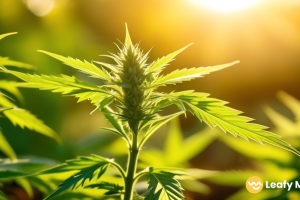
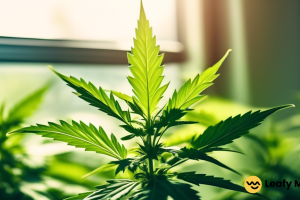
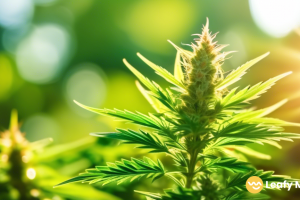




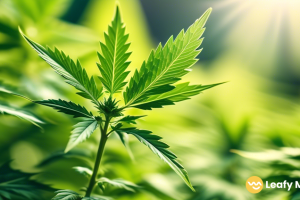
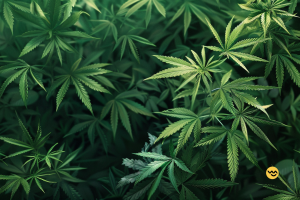
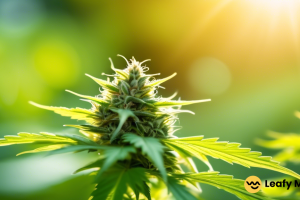
Leave a Reply